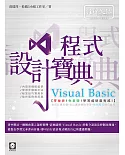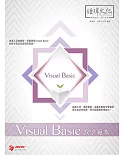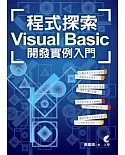For all basic-to-intermediate level courses in Visual C# programming.
An informative, engaging, challenging and entertaining introduction to Visual C#
Created by world-renowned programming instructors Paul and Harvey Deitel, Visual C# How to Program, Sixth Edition introduces students to the world of desktop, mobile and web app development
with Microsoft?Visual C#?programming language. Students will use the .NET platform and the Visual Studio?Integrated Development Environment to write, test, and debug applications and run them
on a wide variety of Windows?devices.
At the heart of the book is the Deitel signature live-code approachather than using code snippets, the authors present concepts in the context of complete working programs followed by sample
executions. Students begin by getting comfortable with the Visual Studio Community edition IDE and basic C# syntax. Next, they build their skills one step at a time, mastering control
structures, classes, objects, methods, variables, arrays, and the core techniques of object-oriented programming. With this strong foundation in place, the authors introduce more sophisticated
techniques, including searching, sorting, data structures, generics, and collections. Additional practice is provided through a broad range of example programs and exercises selected from
computer science, business, education, social issues, personal utilities, sports, mathematics, puzzles, simulation, game playing, graphics, multimedia and many other areas.
新版特色
● Integrated coverage of new C# 6 functionality.
● C# 6 new language features appear throughout the book and each occurrence is marked with a “6” margin icon
● All material is updated for use with Visual Studio 2015.
Hundreds of exercises updated for student practice skills
圖書特色與優點
Signature “Live Code™ Approach” — Language features are presented in the context of a wide variety of complete working programs.
● Features thousands of lines of code in hundreds of complete working programs.
● A broad range of example programs selected from computer science, business, simulation, game playing, graphics, multimedia and many other areas.
● Enables students to confirm that programs run as expected.
● Students can also download the code from the book's Companion Website www.pearsonglobaleditions.com/deitel.
Object-Oriented Programming
● Outstanding, consistent, and applied pedagogy. Icons throughout identify Software Engineering Observations; Good Programming Practices; Common Programming Errors; Portability Tips;
Performance Tips; Testing and Debugging Tips; and Look-and-Feel Observations.
● Early-objects approach. The book introduces the basic concepts and terminology of object technology in Chapter 1. In Chapter 2, students will visually manipulate graphical user interface
objects, such as labels and images. In Chapter 3, Introduction to C# App Programming, students will write Visual C# program code that manipulates preexisting objects. They will develop their
first customized classes and objects in Chapter 4. Our early objects presentation continues in Chapters 5–9 with a variety of straightforward case studies. Chapters 10–12 take a deeper look at
classes and objects.
● Rich coverage of programming fundamentals. Chapters 5 and 6 present a friendly treatment of control statements and problem solving.
● A clear, example-driven presentation of classes, objects, inheritance, polymorphism and interfaces.
● Optional case study: Using the UML to develop an object-oriented design and Visual C# implementation of an Automated Teller Machine (ATM). The UML™ (Unified Modeling Language™) is the
industry-standard graphical language for modeling object-oriented systems. We introduce the UML in the early chapters. Online Chapters 34 and 35 include an optional case study on
object-oriented design using the UML. We design and implement the software for a simple automated teller machine. We analyze a typical requirements document that specifies the system to be
built. We determine the classes needed to implement that system, theattributes the classes need to have, the behaviors the classes need to exhibit and we specify how the classes must interact
with one another to meet the system requirements. From the design we produce a complete working Visual C# implementation. Students often report a “light bulb moment”–the case study helps them
“tie it all together” and truly understand object orientation.
● Four programming paradigms. We discuss structured programming, object-oriented programming, generic programming and functional programming (new in this edition).
Interesting, Entertaining and Challenging Exercises
● Extensive self-review exercises and answers are included for self-study.
● Each chapter concludes with a substantial set of exercises, including simple recall of important terminology and concepts, identifying the errors in code samples, writing individual program
statements, writing methods to perform specific tasks, writing C# classes, writing complete programs and implementing major projects. The Making a Difference exercises encourage you to use
computers and the Internet to research and work on significant social problems–we hope you’ll approach these exercises with your own values, politics and beliefs.
Illustrations and Figures
● Abundant tables, line drawings, UML diagrams, programs and program outputs are included.
The book’s modular organization helps instructors plan their syllabi.
Other Features
● Use as appropriate with Windows 7, 8 or 10.
● A clear, example-driven presentation of classes, objects, inheritance, polymorphism and interfaces.
● Early introduction to LINQ and generic collections.
● PLINQ (Parallel LINQ) for multicore performance.
● Asynchronous Programming with async and await.
● Functional programming with lambdas and delegates.
● Immutability, files, database with LINQ to Entities.
● Visual C# debugging, integrated exception handling.
● Extensive treatment of Windows Forms GUI.
● Online coverage of Universal Windows Platform (UWP) GUI for desktop and mobile apps.
● The printed book contains the core content (Chapters 1–23) for introductory course sequences.
● Additional online content for more advanced courses: ASP.NET web app development; XML and LINQ to XML; Building a Microsoft Azure™ Cloud Computing App; Web Services and ATM OOD case
study.
目錄
Ch1: Introduction to Computers, the Internet and Visual C#
Ch2: Introduction to Visual Studio and Visual Programming
Ch3: Introduction to C# App Programming
Ch4: Introduction to Classes, Objects, Methods and strings
Ch5: Algorithm Development and Control Statements: Part 1
Ch6: Control Statements: Part 2
Ch7: Methods: A Deeper Look
Ch8: Arrays; Introduction to Exception Handling
Ch9: Introduction to LINQ and the List Collection
Ch10: Classes and Objects: A Deeper Look
Ch11: Object-Oriented Programming: Inheritance
Ch12: OOP: Polymorphism and Interfaces
Ch13: Exception Handling: A Deeper Look
Ch14: Graphical User Interfaces with Windows Forms: Part 1
Ch15: Graphical User Interfaces with Windows Forms: Part 2
Ch16: Strings and Characters: A Deeper Look
Ch17: Files and Streams
Ch18: Searching and Sorting
Ch19: Custom Linked Data Structures
Ch20: Generics
Ch21: Generic Collections; Functional Programming with LINQ/PLINQ
Ch22: Databases and LINQ
Ch23: Asynchronous Programming with async and await
Appendices
ONLINE Topics
Web App Development with ASP.NET
XML and LINQ to XML
Universal Windows Platform (UWP) GUI, Graphics, Multimedia and XAML
REST Web Services
Cloud Computing with Microsoft Azure? Windows Presentation Foundation (WPF) GUI, Graphics, Multimedia and XAML
ATM Case Study, Part 1: Object-Oriented Design with the UML
ATM Case Study, Part 2: Implementing an Object- Oriented Design in C#
Using the Visual Studio Debugger
Ch2: Introduction to Visual Studio and Visual Programming
Ch3: Introduction to C# App Programming
Ch4: Introduction to Classes, Objects, Methods and strings
Ch5: Algorithm Development and Control Statements: Part 1
Ch6: Control Statements: Part 2
Ch7: Methods: A Deeper Look
Ch8: Arrays; Introduction to Exception Handling
Ch9: Introduction to LINQ and the List Collection
Ch10: Classes and Objects: A Deeper Look
Ch11: Object-Oriented Programming: Inheritance
Ch12: OOP: Polymorphism and Interfaces
Ch13: Exception Handling: A Deeper Look
Ch14: Graphical User Interfaces with Windows Forms: Part 1
Ch15: Graphical User Interfaces with Windows Forms: Part 2
Ch16: Strings and Characters: A Deeper Look
Ch17: Files and Streams
Ch18: Searching and Sorting
Ch19: Custom Linked Data Structures
Ch20: Generics
Ch21: Generic Collections; Functional Programming with LINQ/PLINQ
Ch22: Databases and LINQ
Ch23: Asynchronous Programming with async and await
Appendices
ONLINE Topics
Web App Development with ASP.NET
XML and LINQ to XML
Universal Windows Platform (UWP) GUI, Graphics, Multimedia and XAML
REST Web Services
Cloud Computing with Microsoft Azure? Windows Presentation Foundation (WPF) GUI, Graphics, Multimedia and XAML
ATM Case Study, Part 1: Object-Oriented Design with the UML
ATM Case Study, Part 2: Implementing an Object- Oriented Design in C#
Using the Visual Studio Debugger
網路書店
類別
折扣
價格
-
新書9折$1170
-
新書95折$1235
-
新書95折$1235
-
新書$1300





















